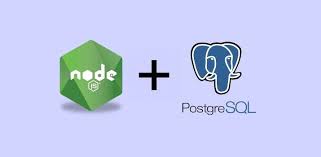Using SQL Databases with Node.js
 Anuj Kumar Upadhyay
Anuj Kumar Upadhyay
Welcome to Day 12 of our Node.js blog series! 🤔
Today, we'll explore the integration of SQL databases with Node.js. While NoSQL databases like MongoDB offer flexibility, SQL databases provide strong consistency, ACID (Atomicity, Consistency, Isolation, Durability) compliance, and structured query capabilities. We will introduce SQL databases, demonstrate how to connect to MySQL or PostgreSQL, and use an ORM (Object-Relational Mapping) library like Sequelize or TypeORM to perform basic CRUD operations.
Introduction to SQL Databases
SQL (Structured Query Language) databases are relational databases that store data in tables, which consist of rows and columns. Each table has a unique schema, and relationships between tables are established using foreign keys. SQL databases are known for their robustness, support for complex queries, and strong transactional integrity.
Popular SQL databases include:
MySQL: Open-source, widely used, and suitable for a variety of applications.
PostgreSQL: Known for its advanced features, extensibility, and compliance with SQL standards.
Connecting to MySQL or PostgreSQL
To connect Node.js to an SQL database, you need the respective database client library.
Setting Up MySQL
Install MySQL:
- Download and install MySQL from the official website.
Install the MySQL Node.js Client:
- Use npm to install the MySQL client library.
npm install mysql2
Setting Up PostgreSQL
Install PostgreSQL:
- Download and install PostgreSQL from the official website.
Install the PostgreSQL Node.js Client:
- Use npm to install the PostgreSQL client library.
npm install pg
Connecting to the Database
Here’s how to connect to MySQL or PostgreSQL using the respective libraries:
MySQL:
const mysql = require('mysql2');
const connection = mysql.createConnection({
host: 'localhost',
user: 'root',
password: 'password',
database: 'myDatabase'
});
connection.connect(err => {
if (err) {
console.error('Error connecting to MySQL:', err.stack);
return;
}
console.log('Connected to MySQL as id', connection.threadId);
});
// Close the connection
connection.end();
PostgreSQL:
const { Client } = require('pg');
const client = new Client({
host: 'localhost',
user: 'postgres',
password: 'password',
database: 'myDatabase',
port: 5432
});
client.connect()
.then(() => console.log('Connected to PostgreSQL'))
.catch(err => console.error('Connection error', err.stack))
.finally(() => client.end());
Explanation:
Both examples demonstrate creating a connection to the database using connection details such as host, user, password, and database name.
connect()establishes the connection, andend()closes it after operations are completed.
Using an ORM (Sequelize or TypeORM)
ORMs (Object-Relational Mapping) provide a higher-level abstraction over raw SQL, allowing developers to interact with the database using JavaScript objects and methods. This simplifies database operations and ensures consistency in accessing and manipulating data.
Sequelize
Sequelize is a popular ORM for Node.js that supports multiple SQL databases, including MySQL and PostgreSQL.
Installation:
npm install sequelize mysql2 # Or for PostgreSQL npm install sequelize pg pg-hstoreSetup and Configuration:
const { Sequelize, DataTypes } = require('sequelize'); const sequelize = new Sequelize('myDatabase', 'root', 'password', { host: 'localhost', dialect: 'mysql', // Or 'postgres' }); // Test the connection sequelize.authenticate() .then(() => console.log('Connection established successfully.')) .catch(err => console.error('Unable to connect to the database:', err));Defining Models:
Models in Sequelize represent tables in the database.
const User = sequelize.define('User', { name: { type: DataTypes.STRING, allowNull: false }, age: { type: DataTypes.INTEGER, allowNull: false }, email: { type: DataTypes.STRING, allowNull: false, unique: true } }); // Sync the model with the database sequelize.sync() .then(() => console.log('User model synced with the database.')) .catch(err => console.error('Error syncing model:', err));CRUD Operations with Sequelize:
// Create User.create({ name: 'Alice', age: 25, email: 'alice@example.com' }) .then(user => console.log('User created:', user)) .catch(err => console.error('Error creating user:', err)); // Read User.findAll().then(users => console.log('All users:', users)); // Update User.update({ age: 26 }, { where: { email: 'alice@example.com' } }) .then(result => console.log('Number of affected rows:', result[0])) .catch(err => console.error('Error updating user:', err)); // Delete User.destroy({ where: { email: 'alice@example.com' } }) .then(() => console.log('User deleted')) .catch(err => console.error('Error deleting user:', err));Explanation:
User.create()inserts a new record.User.findAll()retrieves all records.User.update()updates records based on a condition.User.destroy()deletes records based on a condition.
TypeORM
TypeORM is another popular ORM for Node.js, supporting TypeScript and JavaScript and compatible with SQL databases like MySQL and PostgreSQL.
Installation:
npm install typeorm reflect-metadata # Add database driver npm install mysql2 # Or for PostgreSQL npm install pgSetup and Configuration:
require('reflect-metadata'); const { createConnection, Entity, PrimaryGeneratedColumn, Column } = require('typeorm'); @Entity() class User { @PrimaryGeneratedColumn() id; @Column() name; @Column() age; @Column() email; } createConnection({ type: 'mysql', // Or 'postgres' host: 'localhost', port: 3306, username: 'root', password: 'password', database: 'myDatabase', entities: [User], synchronize: true, }).then(connection => { console.log('Connected to the database with TypeORM'); // Create a new user const user = new User(); user.name = 'Bob'; user.age = 30; user.email = 'bob@example.com'; connection.manager.save(user).then(savedUser => { console.log('User saved:', savedUser); }); // Find all users connection.manager.find(User).then(users => { console.log('All users:', users); }); // Update a user connection.manager.findOne(User, { email: 'bob@example.com' }).then(user => { user.age = 31; connection.manager.save(user).then(updatedUser => { console.log('User updated:', updatedUser); }); }); // Delete a user connection.manager.findOne(User, { email: 'bob@example.com' }).then(user => { connection.manager.remove(user).then(() => { console.log('User deleted'); }); }); }).catch(error => console.error('Error connecting to the database:', error));Explanation:
createConnection()establishes a connection to the database.Entities (
Userclass) represent tables, and columns are defined using decorators.The
synchronizeoption automatically creates the database schema based on the models.
Conclusion
In this post, we've covered connecting to SQL databases in Node.js, focusing on MySQL and PostgreSQL. We discussed setting up connections, using Sequelize and TypeORM as ORMs to simplify interactions with the database, and performing basic CRUD operations. SQL databases are essential for applications requiring strong data consistency and complex querying capabilities.
In our next post, we'll continue to explore more advanced topics in Node.js like Authentication and Authorization . Stay tuned for more!
Subscribe to my newsletter
Read articles from Anuj Kumar Upadhyay directly inside your inbox. Subscribe to the newsletter, and don't miss out.
Written by

Anuj Kumar Upadhyay
Anuj Kumar Upadhyay
I am a developer from India. I am passionate to contribute to the tech community through my writing. Currently i am in my Graduation in Computer Application.